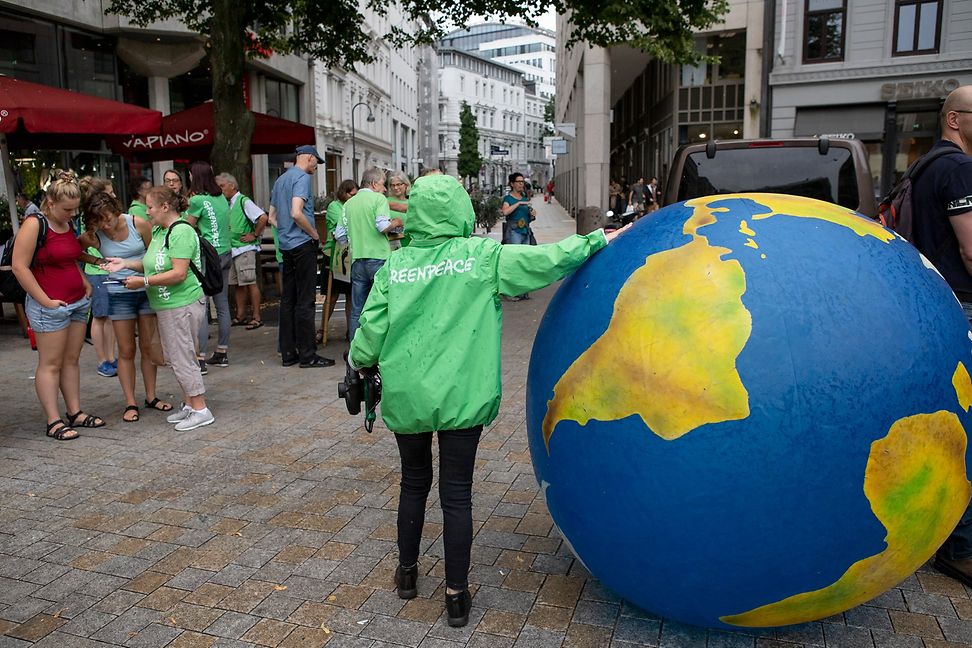在此处更改您的语言和 LGT 位置。
私人客户的数字平台
登入 LGT 智能银行
金融中介机构的数字平台
登入 LGT 智能银行 Pro
常见问题解答 (FAQ)
LGT 智能银行帮助
常见问题解答 (FAQ)
LGT 智能银行专业版帮助
In seven months, humanity has used what earth takes twelve months to regenerate. What this means, why Earth Overshoot Day used to be in December in 1971, and what it tells us about countries.

The first of August has occasionally been an historic day in world history. It was the day, in 1774, that an English clergyman discovered Oxygen. In 1914, it was the day that Germany entered World War One. On the same day in 1981, MTV broadcast its first music video: "Video Killed the Radio Star".
In 2024, we can add an inauspicious new event to the calendar. The first of August is the moment in the year when humanity has consumed more natural resources and produced more waste than our fragile biosphere can replace and absorb over a 12-month period.

They call it Earth Overshoot Day, after which the planet enters a dangerous period of unsustainable consumption, a kind of environmental overdraft. And, unlike any other mark on the historical record, it is far from fixed, having crept steadily forwards like a rising ocean.
To put it another way: "In just seven months, humanity has used what Earth takes twelve months to regenerate", says the Global Footprint Network, the international sustainability organisation that calculates the day. Their methodology is complex, and involves the analysis of dozens of data streams from the UN and science journals by the Ecological Footprint Initiative, based at York University in Toronto, Canada.

In essence, scientists calculate the planet’s biocapacity (the resources our land and seas can produce in a year) and compare it with our ecological footprint in a given year (demand for things like food and forests to absorb our emissions of carbon dioxide), taking into
Above all, the date is an exercise in communication, to turn head-spinning data and project it onto a calendar in a way that anyone can understand. "It’s about making people aware and to hopefully think differently so that they change their behaviour and apply pressure at the political level", says Ursula Finsterwald, LGT’s Head of Group Sustainability Management.
When it began announcing overshoot days, in 2006, the network also began calculating comparable data from previous years, starting in 1971. In that year, overshoot day fell close to the end of the year, on 25 December; humanity was living pretty much within its means.

Then the global population ballooned (it was then less than half what it is today), consumption increased, and we entered a period of peak carbonisation. The gap grew and the date shifted. By 1981, it was 20 November, and 20 October in 1991. It crept into August in 2005, working its way through the month until now.

And because the data the network uses is based at a country level, since 1997 it has also produced national overshoot days. These are designed to illustrate what would happen if the whole world consumed like the people in that country, and reveal the stark inequalities in the way we exploit resources.
"I think the country overshoot days are better because you also have countries that don’t use more than one earth a year, so it’s more reflective of where each place stands", Finsterwald says.
Indeed, many countries don’t have a day at all, because their ecological footprint per person is smaller than global biocapacity per person: They are not in debt. Once countries go into the red, they earn a spot on the overshoot calendar, starting currently with places such as Guinea and Moldova, which sit in the last few days of the year.

Perhaps unsurprisingly, oil-producing nations dominate the wrong end of the rankings; UAE, Kuwait and Bahrain go into deficit in March. Qatar, which has the earliest date, only makes it to 11 February. The US date is 13 March, while Western European nations all exhaust their resources faster than the world as a whole, ranging from Belgium (23 March) to the UK (3 June).
As the graph the network updates each year shows, the date’s forward slide appears to be unstoppable, and Mathis Wackernagel, who co-founded the Global Footprint Network in 2003, says it’s #MoveTheDate campaigning hashtag has yielded little in terms of significant results, whether at the global or national level.
Ironically, the only major shifts have come as a result of disasters that force humanity to check consumption. The 2008 crash, for example, pushed the date back, while the Coronavirus pandemic pegged back overshoot day by more than three weeks, from 29 July in 2019 to 22 August in 2020. There has also been a slight levelling out over the past decade.

"Overshoot Day has produced some action, but I think what is misunderstood is that it’s not just an annual event, it's a cumulative effect", Wackernagel says. "It's a deficit spending. So even if overshoot went down a little bit, you still add more pressure, more debt to the biosphere. It’s like with money - if your deficit spending is a little less than last year, you're still adding to your financial debt."
The network did not set out simply to record an existential crisis in slow motion, but to provide solutions and motivate action. And those solutions need little by way of introduction. Countries such as Germany that have managed at least to slow the movement of their overshoot days are those that have embraced decarbonisation in their energy networks, for example.
Wackernagel sees most potential when a capitalist rather than moral or humane imperative motivates change, ideally before a spiral of stagflation sets in, caused by rising inflation and slowing growth related to resource depletion. "I have a hard time seeing how countries can be successful if their strategy does not have resource security at its centre, particularly given the level of overshoot", he says.
Earth Overshoot Day has been criticised. Robert B. Richardson, an ecological economist at Michigan State University, has said it relies disproportionately on humans’ carbon footprint while underplaying the impact of agriculture or the environmental consequences of land abuse, such as soil erosion and nutrient run-off. If anything, he wonders if the calculations underestimate resource depletion.
Yet even critics support the network’s attempts to quantify and simplify fiendishly complex systems in a way that is easier to communicate, which is the idea behind the whole enterprise. As Wackernagel puts it: "Overshoot will end by design or disaster, and it’s up to us to choose which one we prefer."